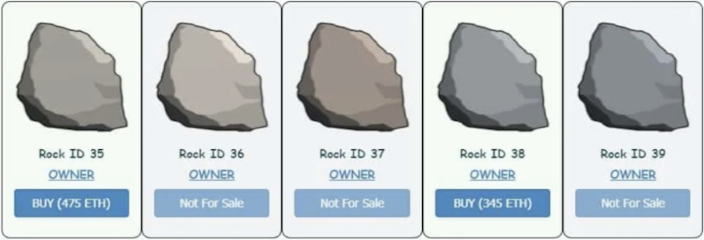Bitcoin and Crypto: A Simple Story Vs. a Convoluted Yarn
Bitcoin’s story is a simple one: it is money you can count on. Simply holding it until you need to spend it. The stories spun by the Crypto Industry are anything but simple, or even logical when examined closely.

In the wake of the recent collapse of many crypto firms and tokens, there are many “I told you so” editorials and tweets going around. There are plenty of “here’s what actually happened” articles making the rounds too. There’s also even some “who could have seen this coming?” pieces.
The further we get into the muck of all these scandalous blow-ups, the murkier the picture seems to become regarding how the collapses and scams were perpetrated. What then is the purest signal we can extract from all this information flying about? What can help us think clearly about the whole space so we can each chart a course for ourselves that avoids these dangers?
Swan Private Insight Update #18
This report was originally sent to Swan Private clients on December 9th, 2022. Swan Private guides corporations and high net worth individuals globally toward building generational wealth with Bitcoin.
Benefits of Swan Private include:
- Dedicated account rep accessible by text, email, and phone
- Timely market updates (like this one)
- Exclusive monthly research report (Insight) with contributors like Lyn Alden
- Invitation-only live sessions with industry experts (webinars and in-person events)
- Hold Bitcoin directly in your Traditional or Roth IRA
- Access to Swan’s trusted Bitcoin experts for Q&A
One way to get down to essential truths necessary to do this is to begin at the very beginning — by looking back at the basics of Bitcoin — at a time before things got this complicated.
So let’s start there. Before there was a “Crypto” industry there was only Bitcoin. As a concept, Bitcoin was a pretty simple idea.
Bitcoin was:
Digital money;
Which anyone could hold directly (without a custodian — there were none in fact);
That had no trusted third party maintaining records;
And where new coins were issued, in precisely predetermined quantities, as rewards for those who did the work of securing the integrity of its records.
It was quite easy to run but very hard, nearly impossible, to change anything about it.
What’s just as important to remember is what was NOT there at the time:
There weren’t countless other tokens claiming some superiority over Bitcoin.
There were no big exchanges, and certainly no “exchange-issued” tokens.
There was no yield being offered or implied.
There was little to no hype of things like smart contracts, utility tokens, decentralized finance, or any of the other boom-and-bust, pump-and-dump ideas like ICOs, DAOs, NFTs, and other three-letter acronyms for ways to make money in crypto.
In those early days, Bitcoin represented a re-imagining of money in the digital age:
It worked like cash.
There were no fractional-reserve institutions holding it for you, and thus, no risk of bank runs.
You had to hold it yourself.
It was actually a really simple idea.
Pure Bitcoin remains exactly that to this day (mostly because of how hard it was and is to change anything about Bitcoin.
Nothing about that has changed. Bitcoin is still scarce, self-custodial, trustless, digital cash.
Moreover, anyone who uses Bitcoin in this native manner still functions in that rather simple world.
And the message that bitcoiners keep spreading is still a simple one. It’s a message that has been distilled down to a handful of short sayings and memes like:
“Get your coins off the exchanges”
“Not your keys, not your coins”
“Running Bitcoin”
“Don’t Trust. Verify”
“Be your own bank”
The idea is not only simple. It is also reliable, durable, unbreakable, unstoppable, and indestructible. Simplicity is its strength. When you hold your own cash and that cash can’t be debased through money printing, you’re not vulnerable to the shenanigans of custodians or leaders whose irresponsibility could lead to your money disappearing or losing its purchasing power. That’s the power of simplicity.
Sign up to start saving Bitcoin
Buy automatically every day, week, or month, starting with as little as $10.
In light of the recent failures of many more complicated stories, that same simple message of holding your own digital money is now being echoed across the youtube channels, Twitter spaces, email newsletters, and TV broadcasts of many crypto companies, crypto influencers and other popular personalities who are not “bitcoin maximalists” (those who are Bitcoin-only advocates). These companies and promoters of the “crypto industry” have amassed large audiences, often through paid marketing campaigns and giveaways. Their message has not been the simple Bitcoin story.
The crypto industry they promote is based on very different ideas than the simple one behind Bitcoin. And the wide range of complicated ideas and convoluted stories crypto has woven all turned out to be weak and fragile ones. So they find themselves in retreat, licking their wounds and trying to salvage their reputations. Their stories quickly became the simple one of “take custody of your coins and tokens.” But it will not stay that way. Their incomes are based on getting paid to promote alternative ideas — ones that hide their flaws behind obscurity, complexity and fancy jargon — and most of all, the appeal to greed: promises of easy money.
However, when compared to Bitcoin’s simple idea, it suddenly becomes much easier to see just how, and why, these ideas come crashing down so quickly, and why “crypto” advocates suddenly find themselves desperately, but all too late, repeating the advice bitcoiners have been giving for many years.
Let’s look quickly at all the alternative messages peddled by the alternatives to Bitcoin. Are their stories simple? Do they even make sense at all? Where do they fall apart? And, in the end, why is it that we keep finding ourselves coming back to Bitcoin’s simple story after each market cycle where these alternative narratives fizzle out and fail to stand the test of time.
These are the alternatives narratives we’ll discuss:
Pre-mines and ICOs
Yield
Staking
Proof of stake
Minting
Leveraging
DeFi
Programmability
Governance Tokens
Exchange tokens
The boom and bust cycle of 2017/2018 was primarily driven by “Initial Coin Offerings.” This expression is a one-word twist on “Initial Public Offerings” which is what happens when corporations list their shares as securities on stock exchanges. It’s curious that despite using such terminology, we now see so many projects trying hard to distance themselves from the label of being a security. (They’re doing it to avoid having to comply with investor protection regulations).
Nevertheless, unlike Bitcoin, which announced an issuance policy that would eventually lead to 21 million coins in circulation, all of it distributed through the act of proof-of-work mining, these other coins came into existence prior to the start of (and often without any) mining. The coins weren’t obtained through work, but were sold to pre-launch investors, often at hyped up online events called the ICO, where auctions were held for the tokens which were then immediately flipped at profit if they could be.
The result of hundreds, probably thousands of these in fact, was unsurprisingly that the overwhelming majority of them went nowhere. Crowds rushed to get in on the initial sales only to flip the tokens to those who missed out. And then tokens that were hot one day, got dumped the next to try to find capital for the next hot token about to be issued. Indeed, if a token didn’t keep its story hot (and very few did), it quickly became abandoned and lost its value and liquidity.
Unlike Bitcoin’s simple story of “there will only ever be a limited number, you can hold yours yourself, and you can verify this for yourself” the pre-mined ICO story was quite different, and anything but simple. If it had a simple story like “this is a coin to power a new social network, ” like, for example, STEEM, it quickly lost steam.
CoinMarketCap
Or if claimed it would power the “Internet of Things” through some new technology, like IOTA, interest quickly waned when something else popped up.
CoinMarketCap
The biggest ICO of all, EOS, debuted at a price of .001289 bitcoin, shot up to .002 bitcoin and then languished, abandoned and forgotten ever since as people moved on. It’s now priced at .00005517 bitcoin, down 96% from its ICO price and 97% from its all time high when compared to bitcoin.
CoinMarketCap
The only pre-mined tokens that held on were those that managed to continue to promote a whole lot of changing narratives, supported by significant marketing. Truly, the only one of these was Ethereum. Indeed its first narrative was that it could be used to create DAOs, decentralized autonomous organizations, but when the first of these collapsed and required a hard fork to return balances to those who got in early on its ICO, the narrative shifted to Ethereum being the platform on which these ICOs could take place. There was also lots of marketing about it being a “world computer, ” — and when those stories lost their shine the story shifted to it being a platform for DeFi and yield, and then later for staking the native token, and being “ultra-sound” money, and minting NFTs. The story has been anything but simple, or even consistent, and each time the story changed, and then ran out of steam, Ethereum needed to come up with a new story.
What today is Ethereum’s value proposition? It’s actually very hard to tell. Is it gas for a world computer to run decentralized applications? I haven’t heard of anyone talking about decentralized apps in years. Is it a protocol for issuing DAOs and ICO tokens? Is it ultra-sound money — a term created when the story needed to pivot because Bitcoin’s sound money story was attracting attention? Is it a coin that generates yield if you stake it? Is it something that will, eventually, and given enough time, scale tremendously to do a bunch of other things? All of these stories are being “thrown at the wall to see if they’ll stick.” But there’s no guarantee any of them will stick. None have stayed stuck to the wall for very long before. As the story complicates further, it gets harder to tell, and fragments into different shards that are harder and harder to follow. In the end, it boils down to “trust us, (us being the Ethereum foundation and/or Vitalik Buterin) to keep coming up with new stories to keep the action hot and pump the price.
If you have one potato and instead of eating it, you plant it, and it successfully grows into a potato plant, when you dig it up at the end of the season, you might have four or five potatoes. That’s yield. And since potatoes are useful, you’ve created value.
So why not simply replicate this with digital potatoes? That’s actually how the whole crypto yield thing got started, except it was with digital yams instead of digital potatoes. They even called it yield “farming.”
The problem of course was that a digital yam is useless, so having more of them did not create any more value, because more of something worthless is still altogether worthless.
The long term price chart for digital yams. (Despite the obvious failure it did not deter crowds from continuously inventing new things to generate digital yield.)
CoinMarketCap
Indeed, with most of these yielding tokens, aside from their own inflation through yield, there is nothing that the tokens actually do. Holders of these tokens are in a battle to outpace inflation with other holders and get out before enthusiasm for their token wanes as people realize there’s no actual use case for the token.
Not all tokens simply generate yield. Bitcoin is one such example. But this didn’t stop companies from setting up shop and offering yield on Bitcoin deposits. “Why hold your own Bitcoin and earn no yield?” they asked, “When you can give it to us and we will pay you yield on it.” Where would this yield come from? Nowhere, it turns out, and the companies that were promoting this proposition are mostly seeking bankruptcy protection now.
The biggest warning in this story is that if someone is paying you yield on your bitcoin, you should take your bitcoin back while you still can.
With simple yield not working for very long, a new twist on the idea came forward — staking. Staking essentially differs from yield on semantics. Staking involves “locking” tokens into contracts, which then increase the supply of the staked tokens until they are unlocked. Long lockup times make it so investors pursuing the largest returns must irrevocably surrender access to their tokens for a long period of time. Meanwhile, as the supply inflates the price crashes and those with funds locked up cannot exit.
A particularly sad example is “Hex” where users were encouraged to lock up their purchased tokens for ten years for maximum returns, but the price in one year alone fell by much more than the full ten years of staking rewards would generate.
CoinMarketCap
Mixing and matching different narratives tells an even more complicated story, but it can be painted over with an attempt at a simpler explanation, even if it is wrong. Enter “Proof of Stake.” Proof of Stake is a whole family of complicated techniques that provide yield for those who will stake their tokens and also adds the claims that this staking serves to secure the blockchain of the token being staked. This has been suggested to be as secure as Bitcoin’s Proof of Work, but that is highly debatable (and I’d argue wildly false). Worse, Proof of Stake is decidedly a centralizing protocol over time, undermining the simple claim you can do as you wish with your coins. Ethereum’s huge move from Proof of Work to Proof of Stake is already riddled with challenges. Over 70% of the blocks in their chain are now censoring transactions since the shift, and even worse, all staked Ethereum remains locked and unusable until some future hard-fork allows unstaking. No date has been announced and nobody knows what kind of selling pressure it will create when unstaking is made possible, as a full 13% of the Ethereum supply is currently locked up.
(It may be worth mentioning that although it is very complicated to understand all the mechanisms behind Proof of Stake, its proponents attempt to distract from this by claiming that it uses considerably less energy than Proof of Work.)
Minting is yet another word for printing tokens, this time referring to the idea of non-fungible tokens. These are tokens each of which is unique, although many are very similar to one another. For example, take a look at these EthRocks each of which is a slightly different color:

Minting is the act of putting a pointer to some digital file on a blockchain so that custody of that pointer can be transferred on a blockchain transaction. There is no limit as to how many NFTs can be minted and each collection of similar files must maintain some story about its collectibility and value to remain tradeable and valuable.
There’s endless false marketing claims made about NFTs that are technologically incorrect. The biggest is the notion that digital files can actually be owned or that their ownership can be enforced by a blockchain.
Why hold your coins when you can give them to someone else and enjoy twice or even twenty or one hundred times the gains through leverage?
Well, you can also lose everything — which is called “getting liquidated”. Or, it’s also possible that the exchange that was holding your coins might themselves disappear and you’ll lose access to your coins that way too.
Leverage has been around on exchanges for a long time, and its appeal of high returns simply ignores the equally likely outcome of high losses, up to and including total losses which would only be temporary setbacks for individuals who simply held their coins.
DeFi covers a broad range of things similar to many of the above schemes. It claims to do this strictly through “smart contracts” which are programs that run on allegedly decentralized protocols. These smart contracts are far too complicated for non-programmers to understand, and have also turned out to be notoriously difficult for programmers to actually write without exploits. Well over $1 billion in hacks have taken place on DeFi this year alone. A CNN article back in August reported that “Some of the biggest crypto hacks of 2022 were on DeFi protocols, including (one single) $625 million hack of video game Axie Infinity’s Ronin network in March.”
Governance tokens promise to give their holders a vote on how the protocol works. Which means that majority holders of the tokens can change the rules of the system. This means the rules of the system can’t be counted on not to be changed by those who own most of them, which is often the people who created them in the first place. There’s simply nothing decentralized or reliable about such tokens. Even Vitalik Buterin, co-creator of Ethereum, upon which most of these things exist recently admitted as much (although he should have said something back in 2017 when many of these were first launched.)
Some exchanges that sell many different “cryptos” have come up with a novel scheme to issue their own crypto token. It is marketed as something between equity in the exchange (although not explicitly) and also as some form of coupon, entitling its holders to discounted services from those exchanges. These are always completely centralized tokens issued and recalled by the exchanges, where the exchanges can change the supply and also the terms and conditions. Back in September of this year, FTX’s token, FTT was allegedly worth $9.4 billion and was what FTX was using as collateral for many of its trades. Today it’s worth $400 million, but has only $7 million of daily volume. It’s hard to make sense of any story for this type of token to have any significant value, but the token of Binance is, at the time of writing, trading at a market capitalization of over $46 billion! That’s a huge red flag.
Bitcoin’s story is a simple one: it is money you can count on and don’t need to do anything fancier with than simply holding it until you need to spend it. The stories spun by the Crypto Industry are anything but simple, or even logical when examined closely.
Sign up to start saving Bitcoin
Buy automatically every day, week, or month, starting with as little as $10.
Tomer Strolight is Editor-in-Chief at Swan Bitcoin. He completed bachelors and masters degrees at Toronto’s Schulich School of Business. Tomer spent 25 years operating businesses in digital media and private equity before turning his attention full time to Bitcoin. Tomer wrote the book “Why Bitcoin?” a collection of 27 short articles each explaining a different facet of this revolutionary new monetary system. Tomer also wrote and narrated the short film “Bitcoin Is Generational Wealth”. He has appeared on many Bitcoin podcasts including What Bitcoin Did, The Stephan Livera Podcast, Bitcoin Rapid Fire, Twice Bitten, the Bitcoin Matrix and many more.
More from Swan Signal Blog
Thoughts on Bitcoin from the Swan team and friends.


The FTX Fiasco and the Fallout to Come
By Sam Callahan
Expect the fires from FTX to continue to burn and claim more victims along the way. If anything, this event has provided a tough lesson on why Bitcoin is different and why self-custody is vital.


Proof of Work vs. Proof of Stake

By Tomer Strolight
Proof of Work, at its heart, is the removal of trust from the system of money, and replacing it with something that can’t be faked: real work.


GBTC was the Genesis of the Crypto Credit Contagion
By Sam Callahan
Learn how GBTC works, how it’s associated with the recent crypto contagion, and why buying spot Bitcoin and taking self-custody helps you avoid all of these risks today.
